Bhutan is a well-known spot for cultural heritage and ecotourism.Visitors appreciate the traditions and beauty of festivals in Bhutan. So, it would be best to schedule your Bhutan trip during one of these festivals. You can watch exciting performances and eat local dishes. Tourists like observing how Bhutanese people honour their deities. You can also learn about nature conservation. Bhutanese people call them Tshechu. The festivals are mainly Buddhist and spiritual in nature. So, keep reading to learn more about the colourful Bhutan festivals.
13 Popular Festivals In Bhutan
Bhutan celebrates many religious and cultural festivals throughout the year. Here are the most popular festivals in Bhutan.
1. Thimphu Tsechu
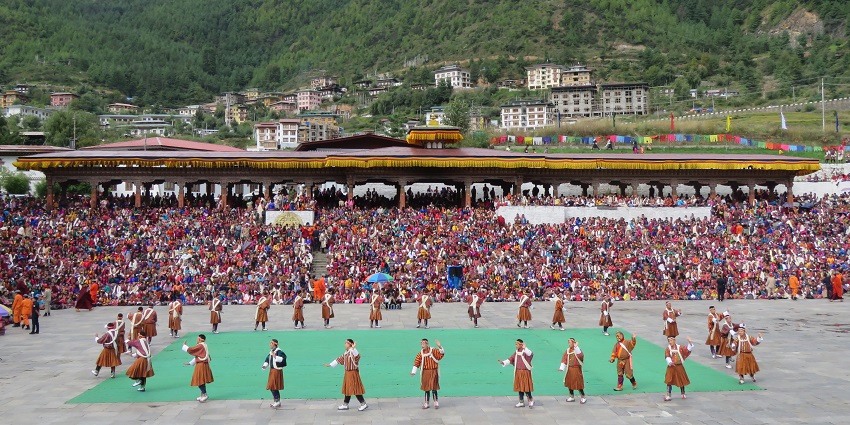
Photo: Vinayaraj / Wikimedia Commons
Thimphu Tsechu is an important religious festival in Bhutan. It is held in the capital city, Thimphu. The festival is in autumn. It lasts for three days. The dates follow the lunar calendar. It is held on the 10th day of the 8th lunar month. The event honours Guru Padmasambhava. He brought Buddhism to Bhutan. The festival is held in Tashichho Dzong. This is a large monastery and government building. Monks and laypeople perform mask dances. These dances are called cham. They represent stories from Buddhist teachings. Some dances are performed by monks. Monks unfurl the Throngdrel.
Month: September or October
2. Paro Tshechu
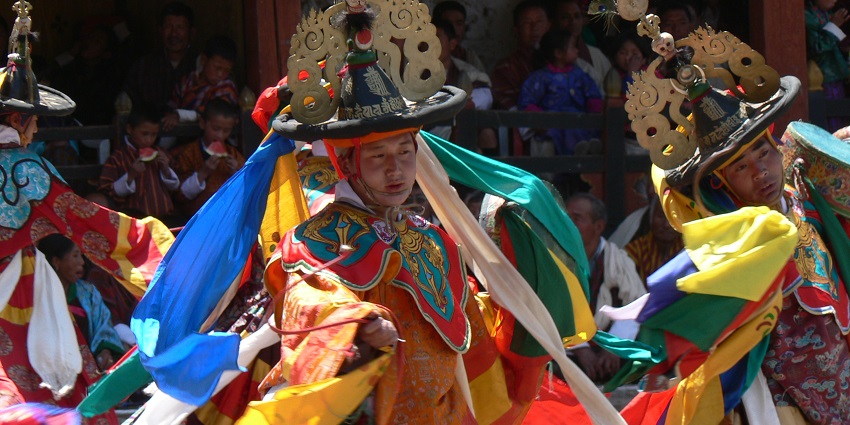
Photo: Stephen Shephard / Wikimedia Commons / Image For Representation Only
Paro Tshechu is celebrated in the Paro District. The festival occurs in spring. The dates follow the lunar calendar. It begins on the 10th day of the second lunar month. It lasts for five days. This festival honours Guru Padmasambhava. He is also known as Guru Rinpoche in Bhutan. The event takes place at Rinpung Dzong. This is a historic fortress and monastery. It overlooks the Paro Valley. The festival includes sacred mask dances. Monks perform the dances. They wear colourful robes. The dances are believed to purify sins. They bring blessings to those who watch. The festival is attended by thousands. Locals sell food and handicrafts nearby.
Month: March or April
3. Jambay Lhakhang Drup
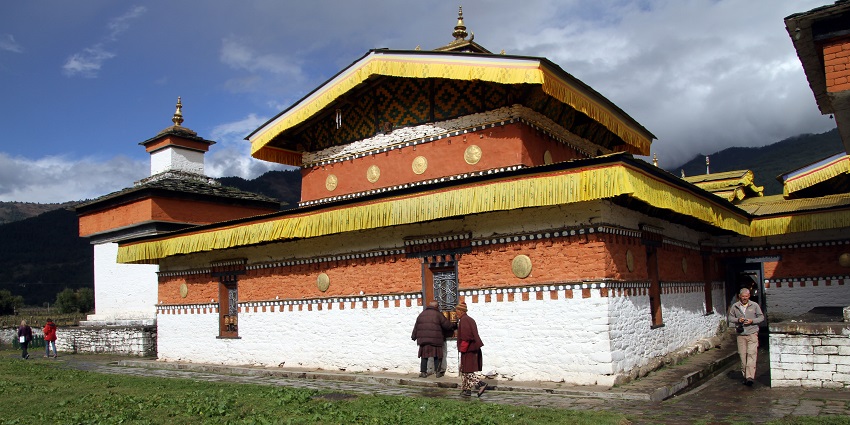
Photo: Gerd Eichmann / Wikimedia Commons
Jambay Lhakhang Drup is both religious and social. It preserves ancient rituals and stories. The festival is held at the Jambay Lhakhang temple. This is one of Bhutan’s oldest temples. King Songtsen Gampo built this structure. He was a Tibetan king. He built it to spread Buddhism. That is why the festival is held here. The festival occurs in autumn. The celebration lasts for several days, and many people participate in the fire blessing. People walk under a burning arch. It is believed to purify sins. There is also a naked dance. Only men perform this dance at midnight. It is called Tercham.
Month: October
4. Wangdue Phodrang Tshechu
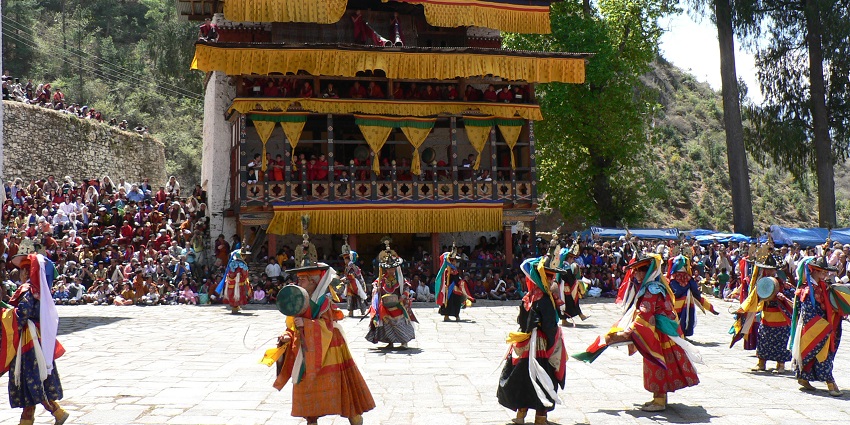
Photo: Stephen Shephard / Wikimedia Commons / Image For Representation Only
The Wangdue Phodrang Tshechu is a religious festival. It is held in Wangdue Phodrang Dzongkhag. The festival usually takes place in autumn. It lasts for three days. The festival was first introduced by Zhabdrung Ngawang Namgyel. He was the unifier of Bhutan. He introduced it in the 17th century. He aimed to bring the community together. The festival takes place in a courtyard. The setting is grand and spiritual. People perform colourful Cham dances. It is also a time for spiritual merit. Devotees receive blessings. They watch the sacred dances. On the last day, a giant Thongdrel is unfurled.
Month: Late September to Early October
5. Punakha Tshechu
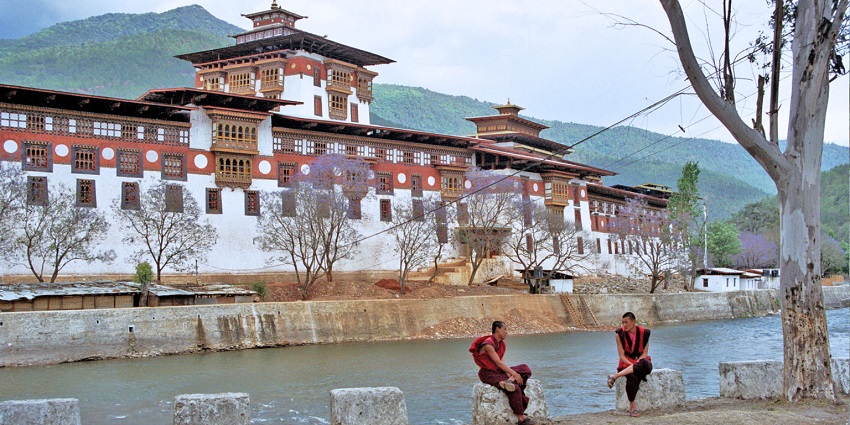
Photo: Technopilgrim / Wikimedia Commons / Image For Representation Only
Punakha Tshechu is among the major festivals in Bhutan that takes place in Punakha Dzong. The Punakha Dzong is a historic fortress in western Bhutan. The festival is held once a year. It lasts for several days. It is about Guru Rinpoche. The people celebrate how Buddhism came to Bhutan. The festival also honours some local deities. Monks and government officials organise this festival. Monks dance slowly, wearing colourful traditional clothes. They can show the Gyenchen Dolma dance or the Shazam Cham. People believe that these dances protect them spiritually. The crowd watches silently and maintains a calm atmosphere.
Month: February or March
6. Sakteng Festival
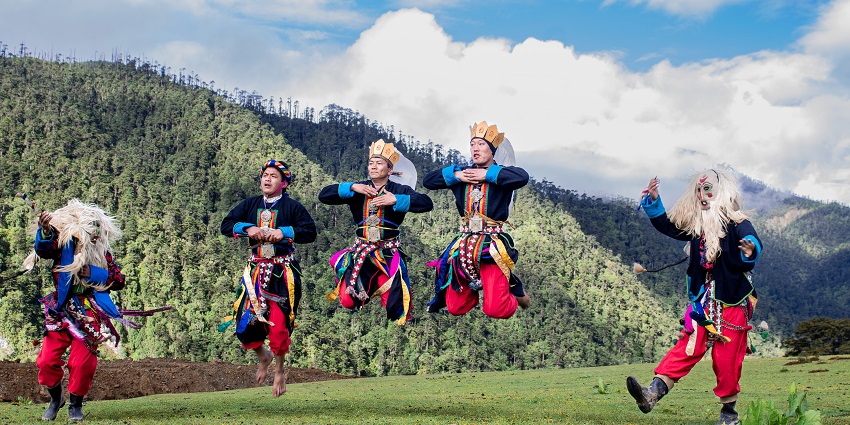
Photo: Tridivadurjoy / Wikimedia Commons
The Sakteng Festival is held in eastern Bhutan. It takes place in Sakteng village. The village is in Trashigang District. This is a remote region, so only the most devoted tourists go there. The event lasts for three days. The festival honours Guru Rinpoche. He is a famous Buddhist teacher. The festival is held at Sakteng Monastery. Villagers prepare for the festival for weeks. Monks chant prayers and light butter lamps. Also, they make offerings to deities. Tourists can try simple and hearty local food. Buckwheat and maise are common ingredients. You can also buy handicrafts like handwoven scarves. This festival is a part of Brokpa culture.
Month: June
7. Ura Yakchoe
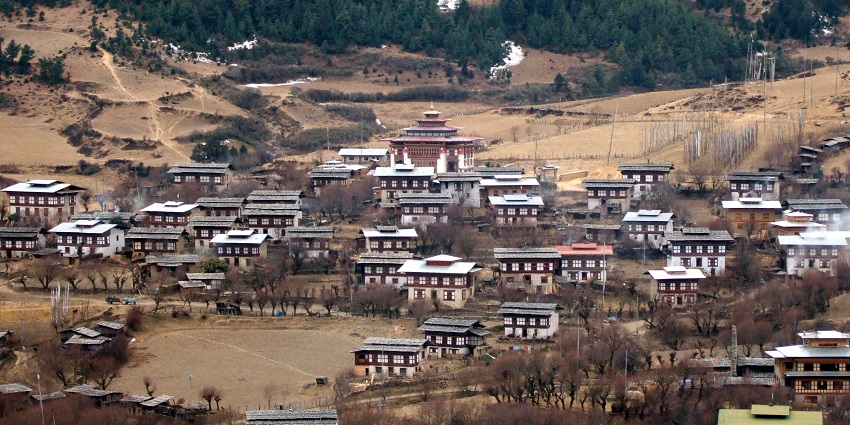
Photo: Christopher J. Fynn / Wikimedia Commons / Image For Representation Only
Ura Yakchoe is a religious festival and is held in Ura Valley in the Bumthang District. The district lies in central Bhutan. Ura Yakchoe lasts for five days. The festival honours sacred relics. Monks lead the ceremonies, and villagers participate in them. The monks display a sacred statue. People believe this statue has healing powers. Legend says it appeared mysteriously and ended up in the hands of a woman who gave it to the temple. The statue is shown once a year. People gather to receive blessings and make offerings at the altar. Musicians play drums, horns, and cymbals. The community hosts the festival and the villagers make the food and decorations.
Month: April or May
8. Haa Summer Festival
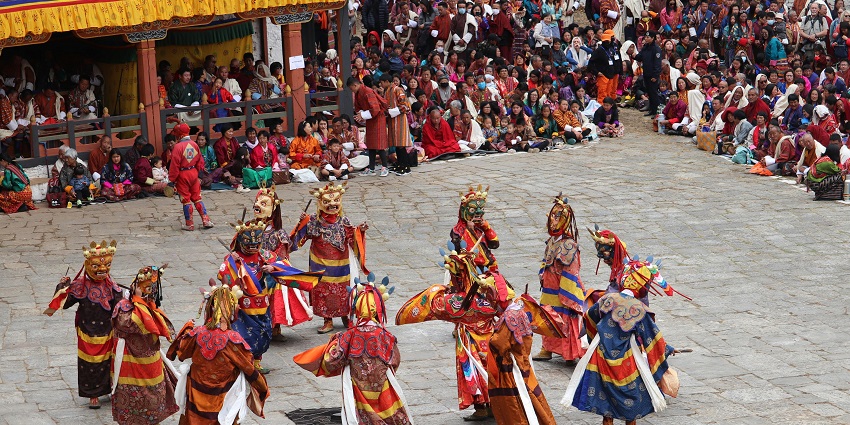
Photo: Rinchen Sonam / Pexels / Image For Representation Only
The Haa Summer Festival is held in Haa Valley. This valley is in western Bhutan. The festival is celebrated every summer. It showcases the traditions of the Haa people. The festival is organised by the Tourism Council of Bhutan because they want to support rural tourism. The festival focuses on the lifestyle of highland people. It celebrates the nomadic culture. Visitors see ancestral rituals. The event includes folk songs and dances. Traditional dishes are served. People drink butter tea and ara. Farmers show their goods. Yak products are also displayed.
Month: July
9. Matsutake Festival
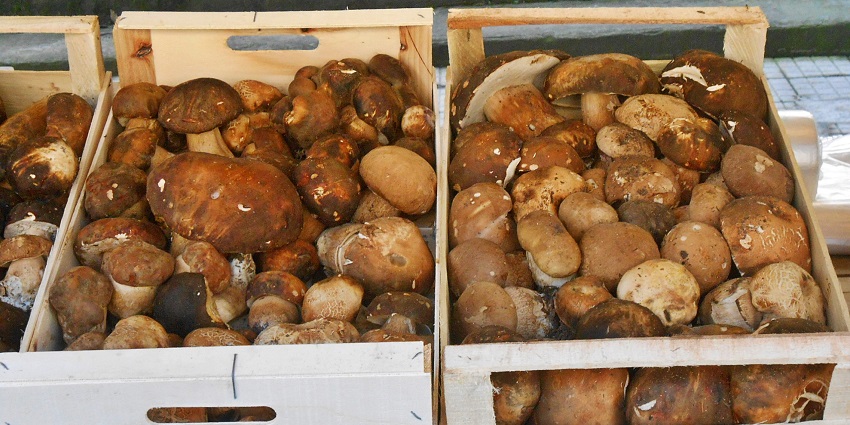
Photo: Zebra48bo / Wikimedia Commons / Image For Representation Only
The Matsutake Festival takes place in Ura Valley. It celebrates the Matsutake mushroom. The mushroom is called “Sangay Shamu” in Bhutanese. It grows naturally in the region. People like it for its taste. They also use it for medicinal purposes. The festival marks the start of mushroom season. Tourists can go on guided mushroom-picking tours. Experts teach how to identify edible mushrooms. It raises awareness about harvesting. Cooks serve dishes made with Matsutake. The event is organised by the local government. The Tourism Council of Bhutan also supports it. The festival shows the identity of the Ura community. It promotes the local livelihoods.
Month: August
10. Jomolhari Mountain Festival
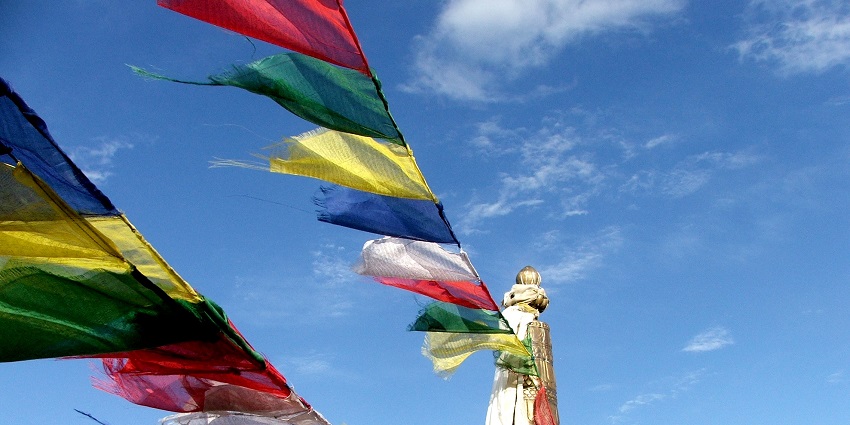
Photo: CC0 Public Domain / pxhere / Image For Representation Only
The Jomolhari Mountain Festival is held near the base of Mount Jomolhari. The location is in northwestern Bhutan. The festival is held in Soe and Lingzhi villages. These villages are near the snow leopard habitat. It highlights snow leopard conservation. It supports environmental education. Local people learn how to save the leopards. The event is supported by the Bhutan Foundation. The Government and local organisations also help them. Many tourists trek to the festival site to spot the rare leopards. The festival promotes eco-tourism and spreads awareness about animal rights.
Month: October
11. Nomad Festival
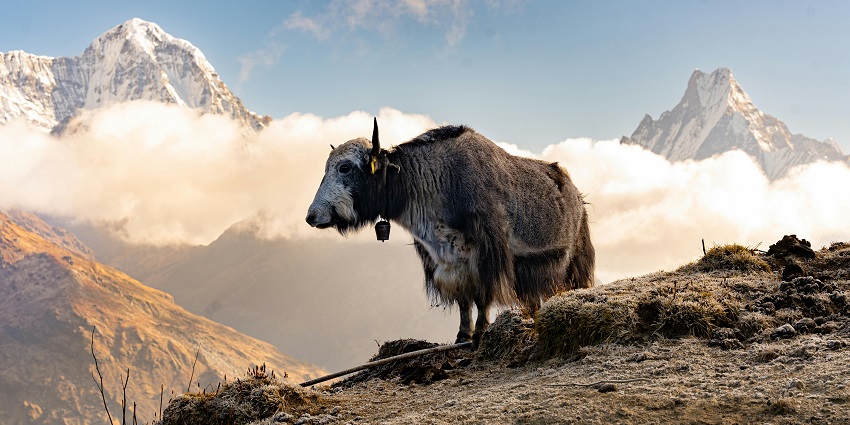
Photo: subash click / Pexels / Image For Representation Only
The Nomad Festival is held in the Bumthang District. The location is in the central part of the country. The event celebrates nomadic culture. Herders come from Laya and Lunana. The festival also includes groups from Merak and Sakteng. The festival is about the lifestyle of nomads. It is organised by the Tourism Council of Bhutan, and local communities help host it. It preserves nomadic heritage. The event helps tourists understand nomadic life. Women wear colourful woven clothes, while men wear traditional boots and hats. People perform nomadic songs, dances and their archery skills. Tourists can try local dishes made from yak products.
Month: February
12. Takin Festival
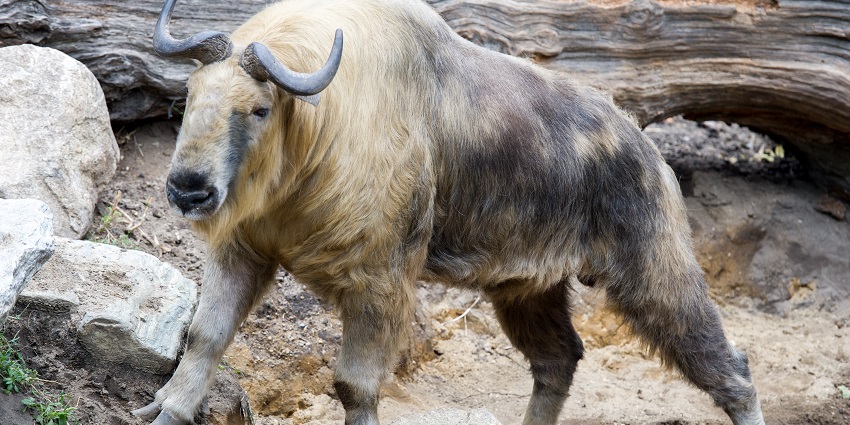
Photo: Eric Kilby / Wikimedia Commons / Image For Representation Only
The Takin Festival takes place in the Gasa District, the northwestern part of the country. The location is Jigme Dorji National Park. The festival lasts for two days. It celebrates the takin. The takin is Bhutan’s national animal. It is a rare and endangered animal. It resembles a mix of goat and cow. The festival promotes conservation. It raises awareness about this endangered species. The animal has religious significance. A legend links it to Lama Drukpa Kunley. He is a famous Buddhist saint, known as the “Divine Madman.” According to legend, he created the takin by fusing a cow and a goat. Artisans sell handmade goods.
Month: March
13. The Annual Black-Necked Crane Festival
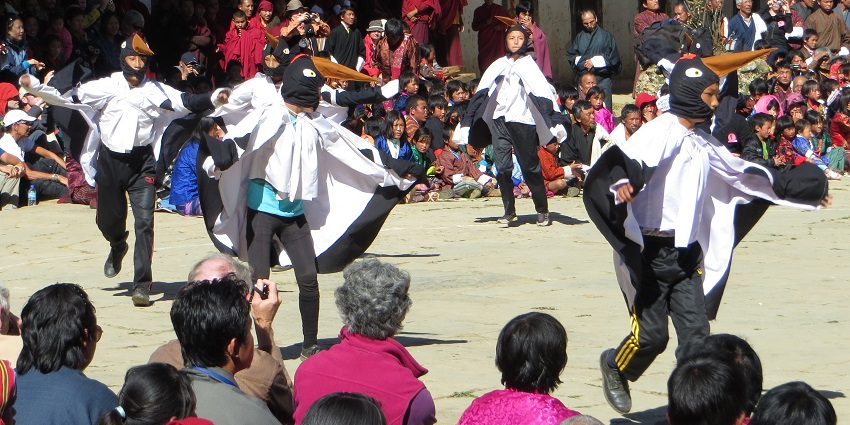
Photo: Doug Knuth / Wikimedia Commons / Image For Representation Only
The Annual Black-Necked Crane Festival is held in Bhutan. People celebrate it in Phobjikha Valley in Wangdue Phodrang District. The festival marks the arrival of black-necked cranes. These cranes migrate from Tibet and arrive in late autumn. They stay for the winter. The birds are endangered, and Bhutan protects them. Locals consider them sacred birds in their spiritual beliefs. The Annual Black-Necked Crane Festival is held at Gangtey Monastery. Monks and students organise the event. Monks pray for the well-being of the cranes. They mimic the birds’ movements in the dance. The locals create stage plays to teach conservation values.
Month: November
Festivals in Bhutan range from cultural traditions to animal conservation. Tourists can watch a religious dance. They can also help Bhutan protect its precious animals. You can add religious and environmental days to your Bhutan trip. It will help you understand the culture. Plan a trip with TripXL to book tickets to your favourite Bhutan festival today.
Cover Photo: Cfynn / Wikimedia Commons


 WhatsApp
WhatsApp
 Twitter
Twitter









